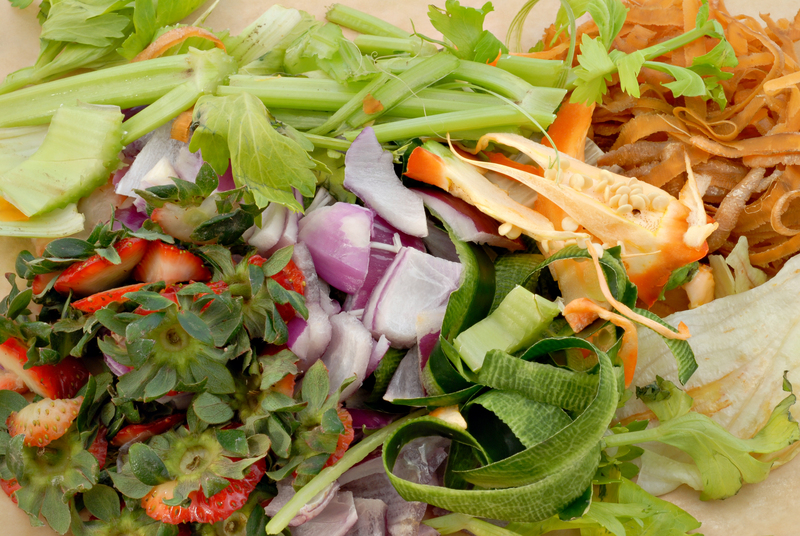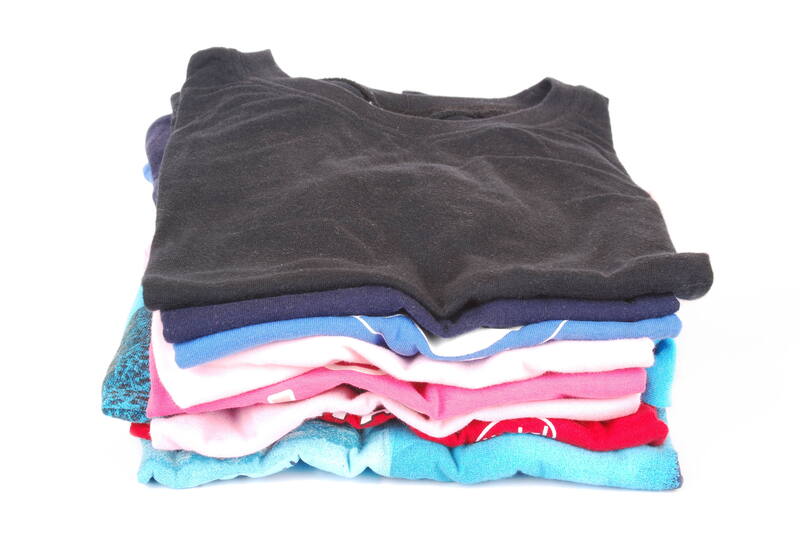Less Stuff, More Life: Embracing Minimalist Living and Decluttering
In today's restless and hectic world, the pressure to own more, consume endlessly, and fill our homes with possessions can feel overwhelming. Yet, there's a growing desire among people to break free from clutter and reclaim joy by living with intention. The minimalist movement offers a powerful alternative: by living with less stuff, you can create more space, more peace, and ultimately, more life.
In this comprehensive guide, we explore the transformative benefits of minimalist living and decluttering, providing practical tips, insights, and strategies to help you achieve a simpler, more fulfilling lifestyle. Let's discover how embracing minimalism can transform your home, mind, and overall well-being.
What Is Minimalist Living?
Minimalism is a lifestyle philosophy that focuses on living with less and finding value in simplicity. It's about being aware of what you invite into your life, making room for what genuinely matters, and eliminating excess--both physical and mental.
The essence of minimalist living is not simply having fewer belongings, but rather choosing to keep only those things that truly serve a purpose or spark joy. It's about intentionality, mindfulness, and creating more space for experiences rather than possessions.

The Life-Changing Benefits of Decluttering and Minimalist Living
Adopting a minimalist approach comes with profound, lasting rewards. Here's how:
- Greater Freedom: Less to clean, organize, and worry about means more time for adventures, creativity, and quality relationships.
- Reduced Stress: A clutter-free home makes your environment naturally calmer and less chaotic. Studies have shown that minimalists experience lower cortisol levels due to less clutter-induced stress.
- Financial Savings: Buying less frees up resources for what truly matters--travel, education, or investing in experiences over things.
- Enhanced Well-being: A tidy, organized space often leads to better sleep, greater productivity, and improved mental health.
- Sustainable Living: Consuming less helps reduce your environmental footprint and supports a more eco-friendly lifestyle.
Minimalist living empowers you to focus on what counts, fostering a deeper sense of gratitude and freedom.
Common Myths About Minimalism
- "Minimalism is about living with nothing." In reality, it's about living only with what you truly need and love.
- "You have to give up all luxuries." Minimalism simply means curbing excess, not eliminating all enjoyment.
- "It's only for single people or young adults." Minimalist living can be practiced by families, seniors, and people from all walks of life.
Let's dig into practical, actionable ways you can begin your minimalist journey.
How to Start Decluttering and Embracing Minimalist Living
The road to a clutter-free life begins with small, sustainable steps. Here's how to get started:
1. Define Your "Why"
Take time to reflect on why you want to embrace minimalism. Do you crave a tidier home, a clearer mind, or more financial freedom? Pinpointing your motivation helps sustain your commitment, especially when the process feels challenging.
2. Start with a Single Area
Instead of tackling your whole home, pick one manageable area--like a single closet, your desk, or a kitchen drawer. Focus on decluttering this space completely before moving to the next.
3. The Four-Box Method
Use four boxes or bags labeled: Keep, Donate, Sell, and Trash. As you sort through your belongings, place each item in its corresponding box. This method streamlines decision-making and prevents second-guessing.
4. Ask Powerful Questions
- Do I use this regularly?
- Does it bring me joy or serve a purpose?
- Would I purchase this item again today?
If the answer is no, consider letting it go.
5. Celebrate Small Wins
Decluttering is a journey, not a sprint. Every small step--each shelf, drawer, or corner cleared--deserves recognition. Reward yourself along the way without adding more clutter!
Smart Decluttering Techniques
There are numerous strategies to make the decluttering process more efficient and less overwhelming:
The "One-In, One-Out" Rule
For each new item you bring into your space, let go of another. This keeps your home from refilling with clutter over time.
The KonMari Method
Popularized by Marie Kondo, this method asks you to handle each possession and ask, "Does it spark joy?" If not, thank it for its service and release it.
Minimalist Capsule Wardrobe
A capsule wardrobe is a small collection of versatile clothing pieces that mix and match easily. This saves time choosing outfits and cuts down on laundry and storage needs.
Digital Decluttering
Minimalist living also involves your virtual space. Unsubscribe from newsletters, delete unused apps, and organize files regularly to maintain a sense of clarity and productivity.
Scheduled Decluttering Sessions
Set aside just 10-15 minutes daily, or an hour once a week, to address a specific area. Consistency is key for lasting change.
Minimalism Room by Room: A Practical Approach
Living Room
- Opt for multi-purpose furniture.
- Display a few meaningful decorations, not many knick-knacks.
- Keep surfaces clear for a tranquil, open feel.
Kitchen
- Retain only essential cookware and utensils.
- Donate duplicates or unused appliances.
- Store food in clear, organized containers.
Bedroom
- Embrace a "less is more" approach with bedding and decor.
- Utilize under-bed storage sparingly.
- Fold and put away clothes after laundry to prevent buildup.
Bathroom
- Dispose of expired products.
- Use minimal, favorite skincare and makeup items.
- Keep counters and showers tidy for a spa-like retreat.
Workspace or Home Office
- Digitize paperwork where possible.
- Keep only essential supplies on your desk.
- Invest in ergonomic furniture for comfort and clarity.
By systematically working through each room, you can embrace minimalist living with purposeful action.
Minimalism Beyond Belongings: Simplifying Your Life
Minimalism isn't limited to material items; it's also about curating your time, relationships, and commitments.
- Prioritize Meaningful Activities: Focus on hobbies, work, and social engagements that align with your core values.
- Set Digital Boundaries: Limit social media and screen time to protect your mental clarity.
- Streamline Your Schedule: Say no to activities or invites that drain your energy or offer little value.
- Practice Mindfulness: Embrace meditation, journaling, or nature walks as minimalist ways to enrich your inner life.
Overcoming Common Challenges to Minimalist Living
Letting go of possessions and habits doesn't always come easy. Here are some obstacles you might face--and how to overcome them:
Emotional Attachment
Items hold memories and connections. Try photographing sentimental items or keeping only a few special pieces. Remind yourself that the memory lives within you, not the thing.
Guilt Over Waste
To minimize waste, donate or sell usable items. Consider recycling where possible and commit to making better purchasing decisions in the future.
Overwhelm
Break tasks into bite-size chunks. Enlist the help of friends or family, and celebrate progress rather than focusing on what's left to do.
Pressure from Others
Loved ones may not understand your lifestyle change. Communicate your reasons clearly and focus on your own journey without judgment.
Maintaining a Decluttered, Minimalist Home
Achieving a minimalist lifestyle is an ongoing process, not a one-time project. Here's how to sustain your clutter-free life:
- Regular Reviews: Set a reminder to reassess your belongings seasonally or annually.
- Mindful Shopping: Pause before making purchases. Ask yourself if an item truly adds lasting value.
- Stay Inspired: Follow minimalist blogs, podcasts, or join online communities for tips and motivation.
- Course Correct Quickly: When clutter starts creeping back, address it right away before it grows.
Real-Life Stories: Transforming Through Minimalism
Countless individuals and families have transformed their homes and lives through minimalist living and decluttering. From downsizing to smaller homes to letting go of emotional baggage, their journeys show it's possible to create a life that's rich in meaning, not possessions.
- Sophia, age 34, switched to a capsule wardrobe and found mornings less stressful--and more enjoyable.
- The Lee family of four downsized, finding more time for outings and each other by cutting back on toys and gadgets.
- James, a remote worker, decluttered his digital workspace, boosting productivity and reducing burnout.
Every story is unique, but the happiness found in intentional, clutter-free living is universal.

Frequently Asked Questions About Minimalist Living and Decluttering
Is minimalist living expensive or restrictive?
Minimalist living usually saves money over time, as you buy less and value quality over quantity. It's not restrictive--you decide what brings you fulfillment.
How do I get my family on board?
Educate them gently, lead by example, and focus on the benefits. Start with communal areas or your own possessions to avoid conflict.
Can minimalism help reduce environmental impact?
Absolutely! Embracing minimalism means consuming less, creating less waste, and valuing sustainability.
What if I regret getting rid of something?
Some regret is normal, but most people find they don't miss what they've let go. Focus on what you gain--space, peace, and clarity.
Less Stuff, More Life: Your Minimalist Journey Starts Now
Minimalist living isn't just about stripping away belongings--it's about making room for what truly matters. By embracing a clutter-free life, you give yourself the freedom to pursue passions, strengthen relationships, and savor daily moments. The path to minimalist and intentional living is accessible to anyone, regardless of background or circumstance.
Begin today. Let go of what no longer serves you. Open space for new experiences, growth, and joy. Remember: with less stuff, you unlock the potential for more life.